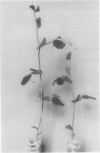Abstract
To determine the requirement for polyamines in gibberellin (GA) induced internode growth polyamine content was measured in internodes of peas of various internode phenotypes (slender, tall, dwarf, nana) with and without applied gibberellin (GA3) and polyamine synthesis inhibitors. Polyamines were assayed as dansyl derivatives which were separated by reverse phase high performance liquid chromatography and detected by fluorescence spectrophotometry. The amounts of polyamines in the different genetic lines of peas, which differed in internode lengths and extractable GA content, correlated with the extent of internode elongation. High polyamine concentrations were associated with young internodes and decreased with internode expansion. Extremely short internodes of nana plants without GA exhibited equal or higher amine concentrations relative to internodes of other lines of peas and GA-stimulated nana seedlings. The polyamine synthesis inhibitors, α-difluoromethylornithine and α-difluoromethylarginine, independently or in combination, inhibited polyamine accumulation and internode elongation of tall peas and GA-stimulated nana plants. Agmatine and putrescine restored growth and endogenous polyamine content to variable degrees. However, exogenous polyamines were not effective in promoting growth unless intracellular amines were partially depleted.
These results suggest that polyamines do not have a role in cell elongation, but may be required to support cell proliferation. Polyamines do not mediate the entire action of GA in internode growth of peas since GA induction of growth involves both cell division and cell elongation, whereas polyamines appear to affect cell division only.
Full text
PDF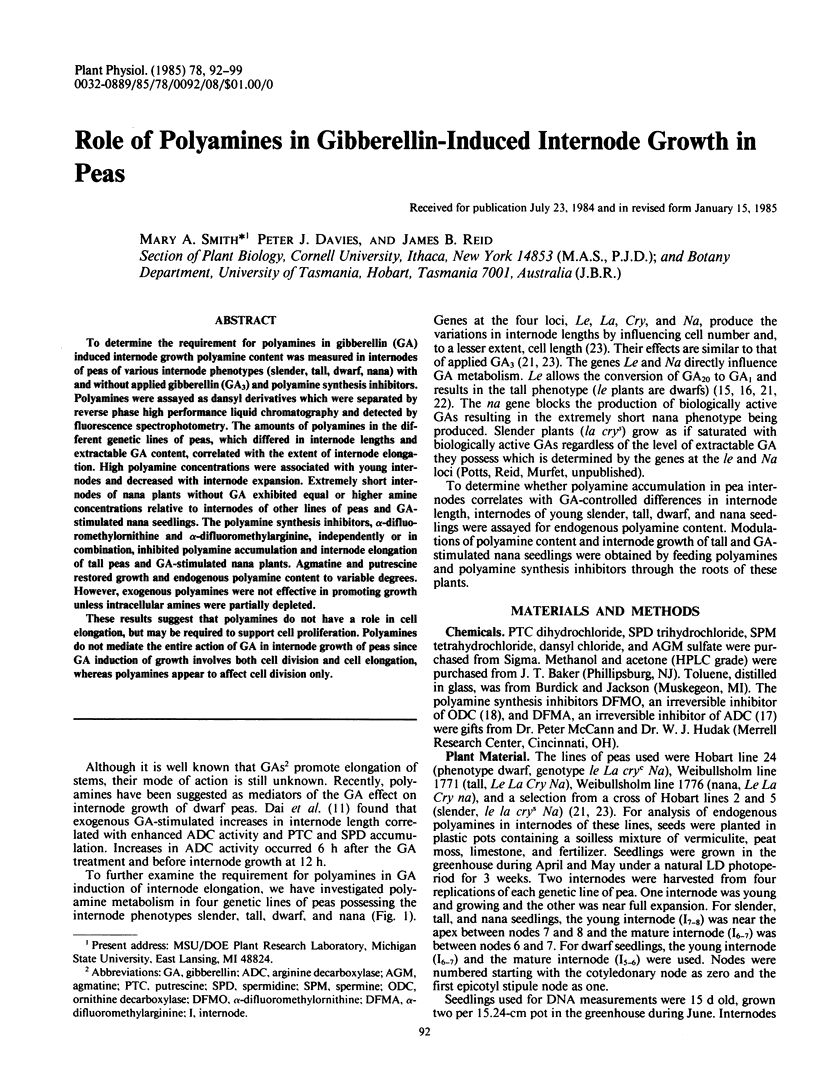
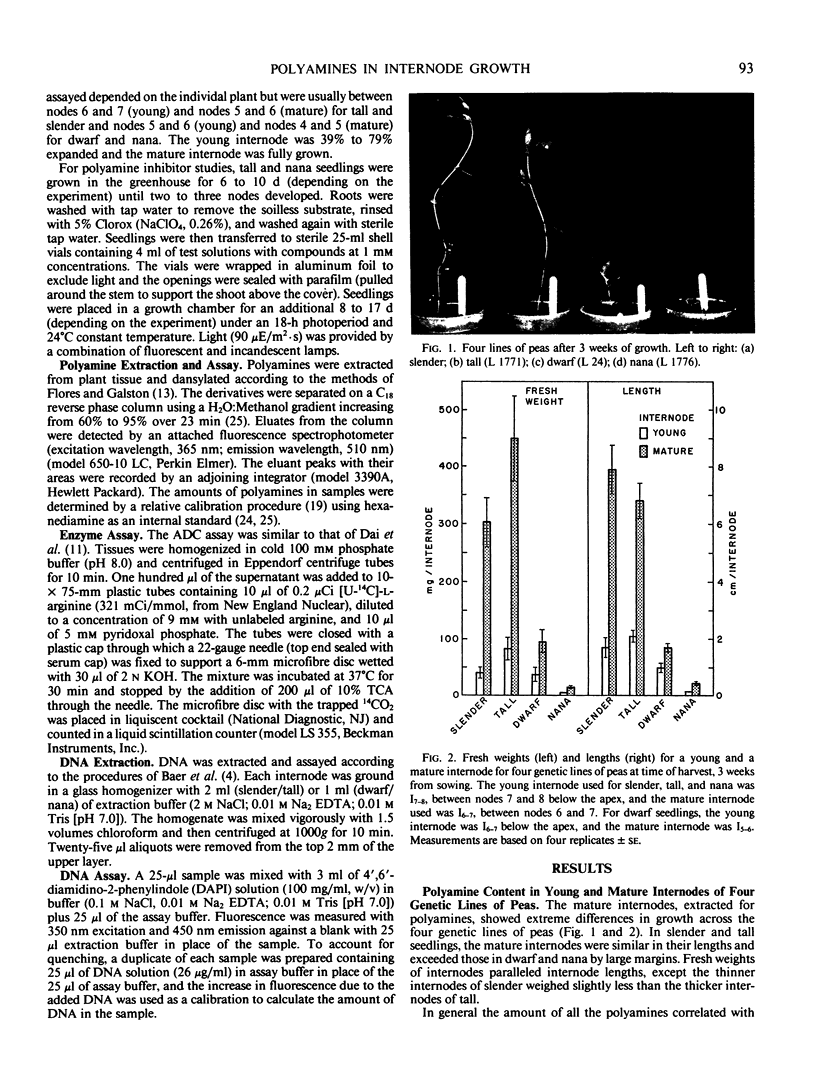
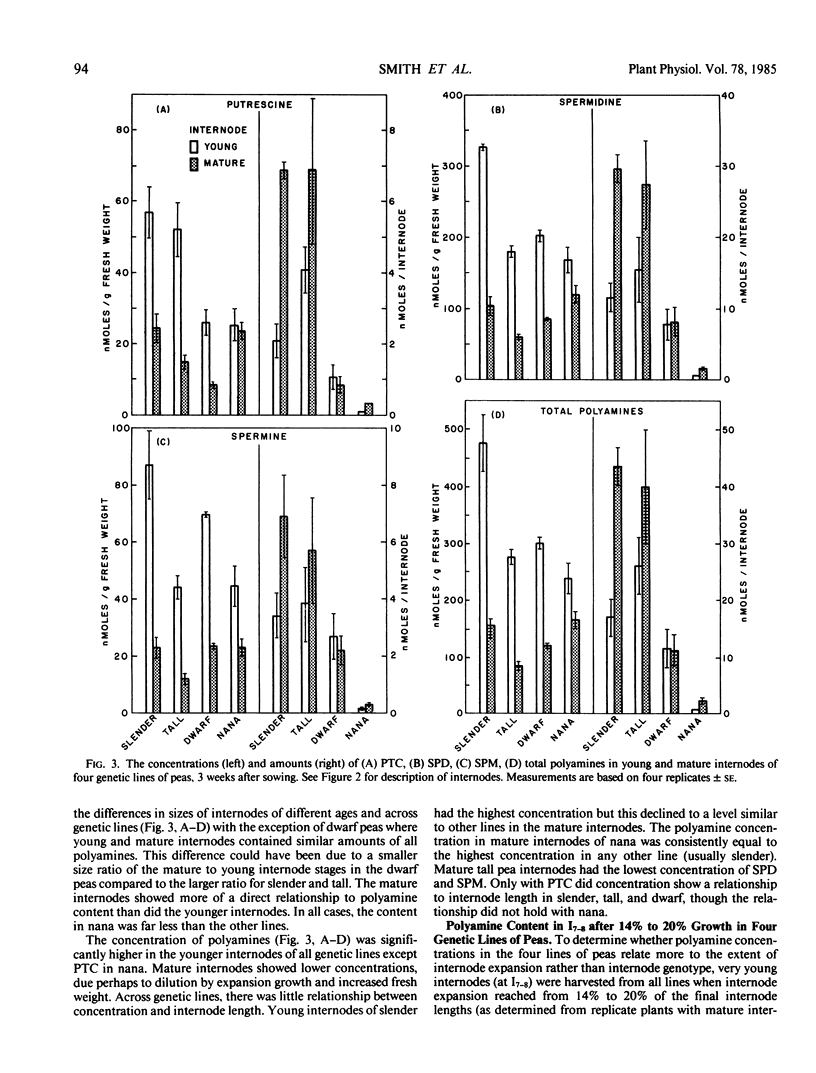
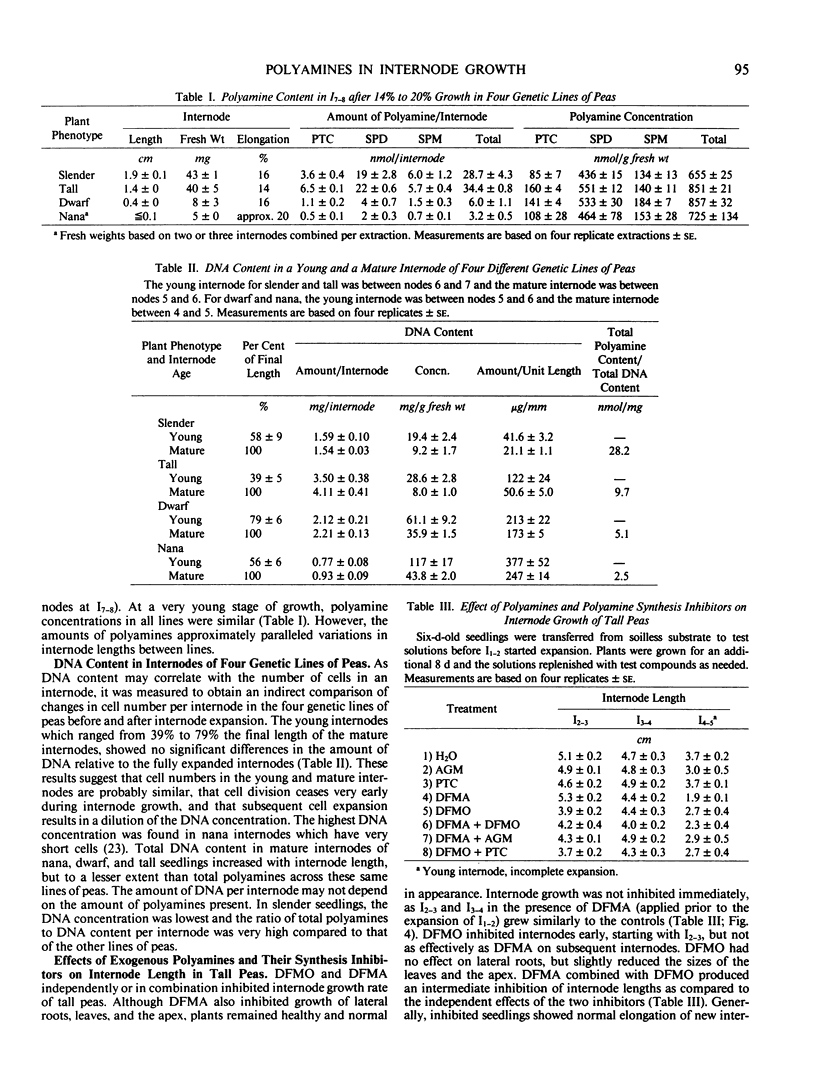
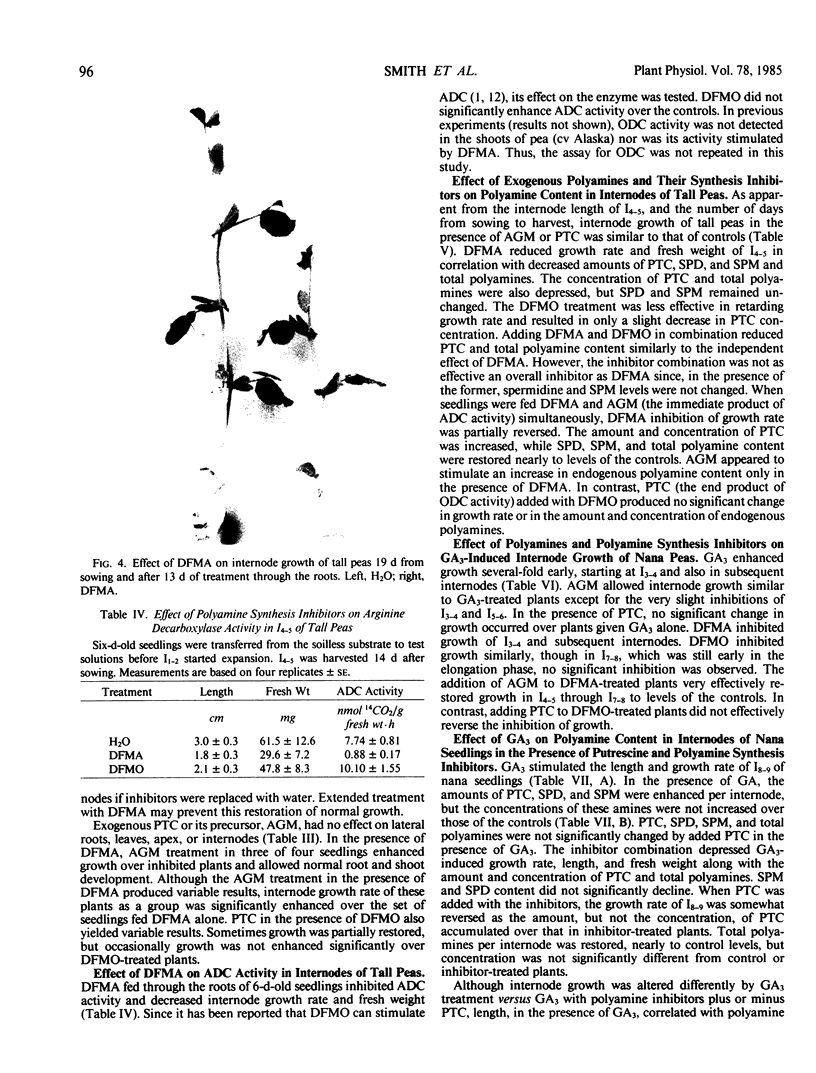
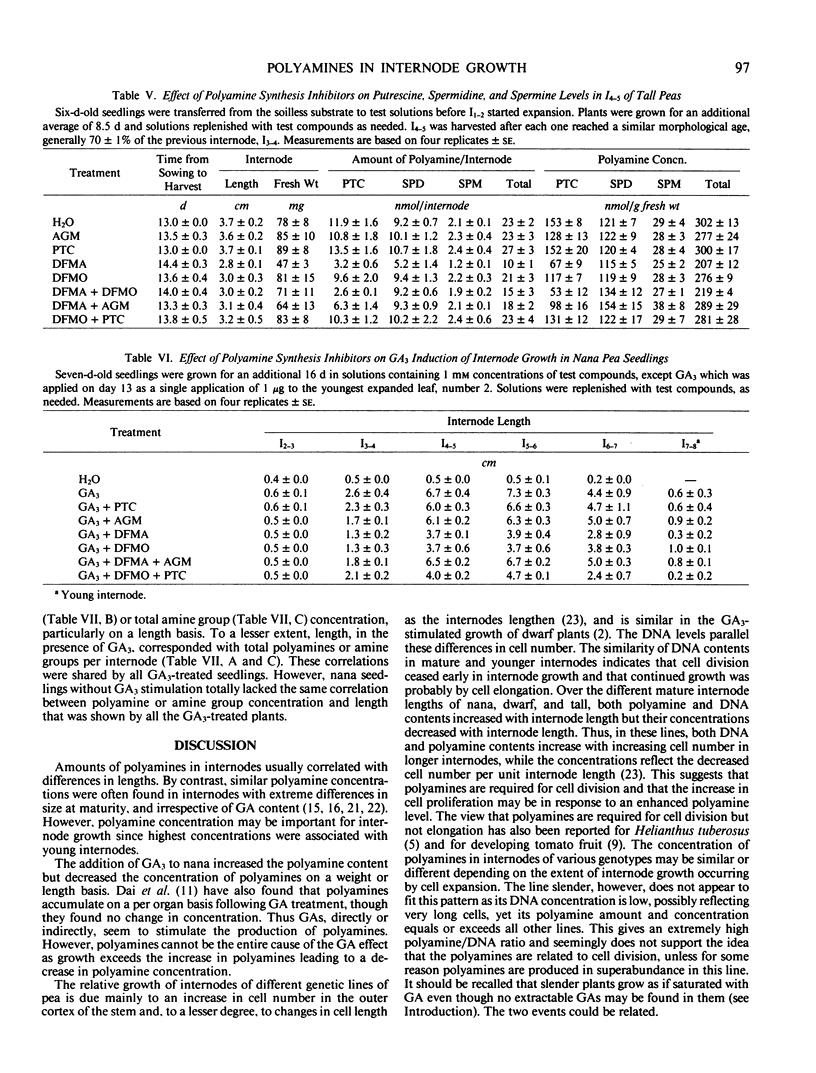
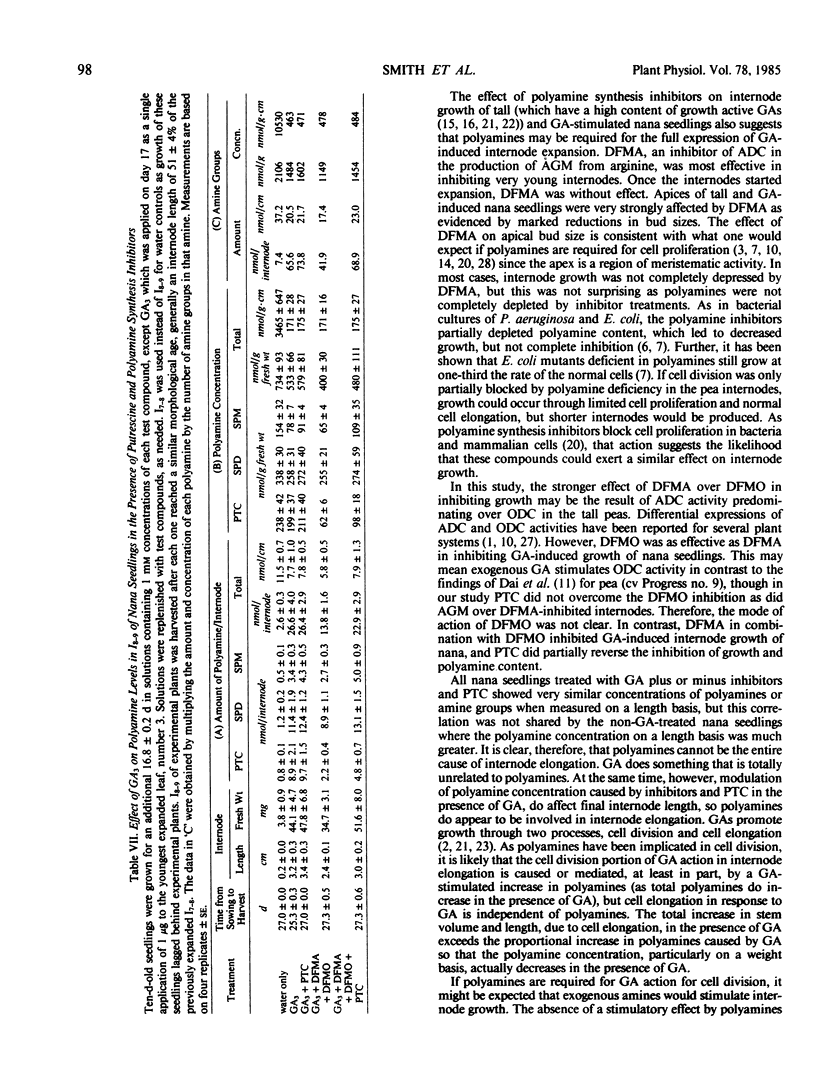
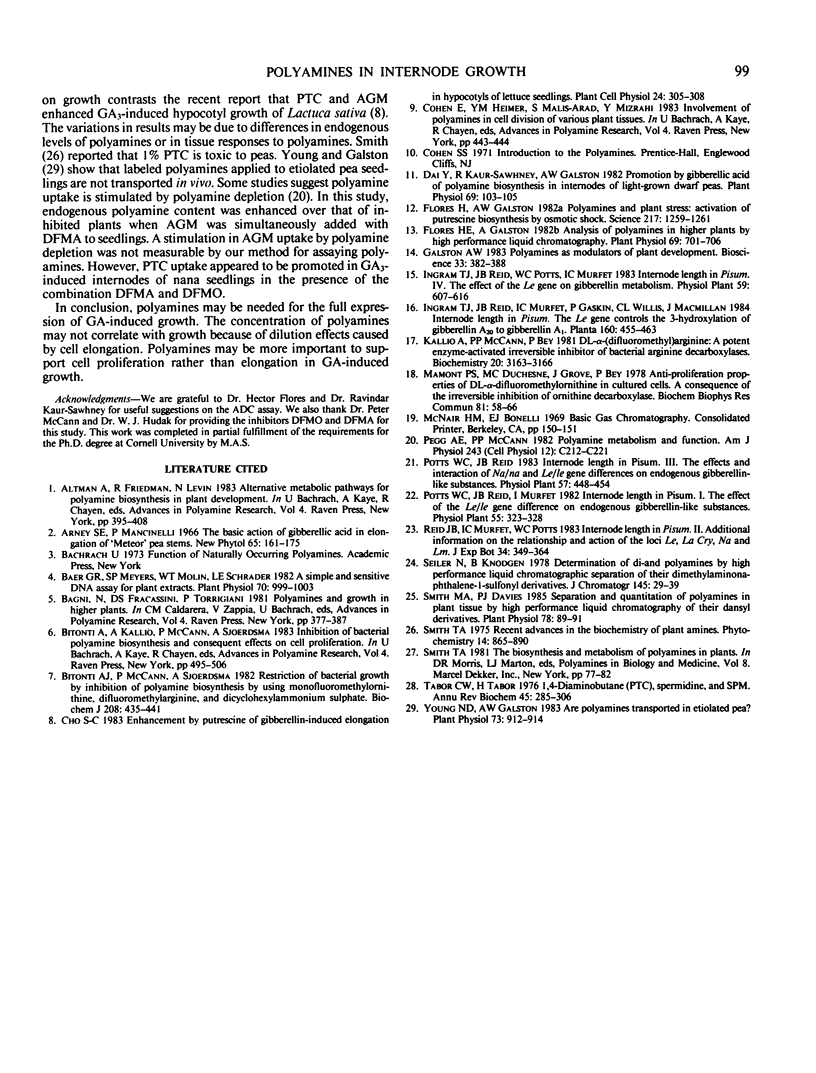
Images in this article
Selected References
These references are in PubMed. This may not be the complete list of references from this article.
- Baer G. R., Meyers S. P., Molin W. T., Schrader L. E. A simple and sensitive DNA assay for plant extracts. Plant Physiol. 1982 Oct;70(4):999–1003. doi: 10.1104/pp.70.4.999. [DOI] [PMC free article] [PubMed] [Google Scholar]
- Bitonti A. J., McCann P. P., Sjoerdsma A. Restriction of bacterial growth by inhibition of polyamine biosynthesis by using monofluoromethylornithine, difluoromethylarginine and dicyclohexylammonium sulphate. Biochem J. 1982 Nov 15;208(2):435–441. doi: 10.1042/bj2080435. [DOI] [PMC free article] [PubMed] [Google Scholar]
- Dai Y. R., Kaur-Sawhney R., Galston A. W. Promotion by gibberellic Acid of polyamine biosynthesis in internodes of light-grown dwarf peas. Plant Physiol. 1982 Jan;69(1):103–106. doi: 10.1104/pp.69.1.103. [DOI] [PMC free article] [PubMed] [Google Scholar]
- Flores H. E., Galston A. W. Analysis of polyamines in higher plants by high performance liquid chromatography. Plant Physiol. 1982 Mar;69(3):701–706. doi: 10.1104/pp.69.3.701. [DOI] [PMC free article] [PubMed] [Google Scholar]
- Flores H. E., Galston A. W. Polyamines and plant stress: activation of putrescine biosynthesis by osmotic shock. Science. 1982 Sep 24;217(4566):1259–1261. doi: 10.1126/science.217.4566.1259. [DOI] [PubMed] [Google Scholar]
- Kallio A., McCann P. P., Bey P. DL-alpha-(Difluoromethyl)arginine: a potent enzyme-activated irreversible inhibitor of bacterial decarboxylases. Biochemistry. 1981 May 26;20(11):3163–3168. doi: 10.1021/bi00514a027. [DOI] [PubMed] [Google Scholar]
- Mamont P. S., Duchesne M. C., Grove J., Bey P. Anti-proliferative properties of DL-alpha-difluoromethyl ornithine in cultured cells. A consequence of the irreversible inhibition of ornithine decarboxylase. Biochem Biophys Res Commun. 1978 Mar 15;81(1):58–66. doi: 10.1016/0006-291x(78)91630-3. [DOI] [PubMed] [Google Scholar]
- Pegg A. E., McCann P. P. Polyamine metabolism and function. Am J Physiol. 1982 Nov;243(5):C212–C221. doi: 10.1152/ajpcell.1982.243.5.C212. [DOI] [PubMed] [Google Scholar]
- Seiler N., Knödgen B. Determination of di-and polyamines by high-performance liquid chromatographic separation of their 5-dimethylaminonaphthalene-1-sulfonyl derivatives. J Chromatogr. 1978 Jan 1;145(1):29–39. doi: 10.1016/s0378-4347(00)81665-5. [DOI] [PubMed] [Google Scholar]
- Smith M. A., Davies P. J. Separation and quantitation of polyamines in plant tissue by high performance liquid chromatography of their dansyl derivatives. Plant Physiol. 1985 May;78(1):89–91. doi: 10.1104/pp.78.1.89. [DOI] [PMC free article] [PubMed] [Google Scholar]
- Tabor C. W., Tabor H. 1,4-Diaminobutane (putrescine), spermidine, and spermine. Annu Rev Biochem. 1976;45:285–306. doi: 10.1146/annurev.bi.45.070176.001441. [DOI] [PubMed] [Google Scholar]
- Young N. D., Galston A. W. Are polyamines transported in etiolated peas? Plant Physiol. 1983 Dec;73(4):912–914. doi: 10.1104/pp.73.4.912. [DOI] [PMC free article] [PubMed] [Google Scholar]




